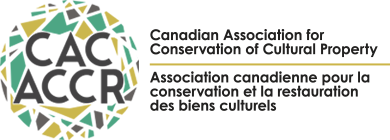J.CAC VOLUME 25 (2000)
The Materials and Techniques of Tom Thomson
The materials and techniques of Tom Thomson were studied through the analysis of thirty of his oil sketches and paintings, executed between 1912 and 1917, the year of his death. Instrumental methods employed for the purpose of this analysis were: scanning electron microscopy/X-ray spectrometry, X-ray diffraction, Fourier transform infrared spectroscopy and polarized light microscopy. Data obtained on the supports, preparation layers and paint are presented. Thomson painted primarily on small birch panels. When he painted on other supports, he often chose to imitate the colour of wood by applying a light brown priming prior to painting. For works on canvas, he seems to have used mainly linen canvases. His colours were achieved by using complex mixtures of pigments, and he used the same mixtures for both his sketches and paintings. The pigments that were most frequently found are alizarin lake, vermilion, cadmium yellows, cobalt yellow, viridian and ultramarine.
Download: JCAC25 Corbeil et al